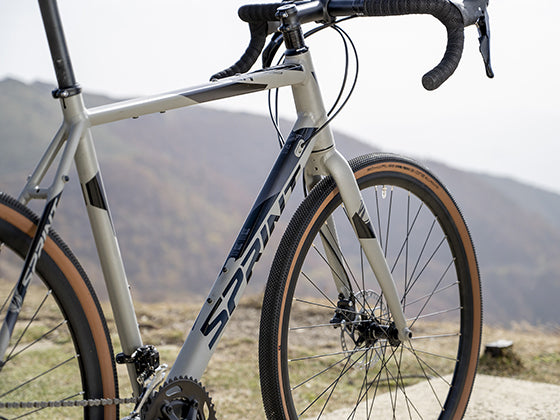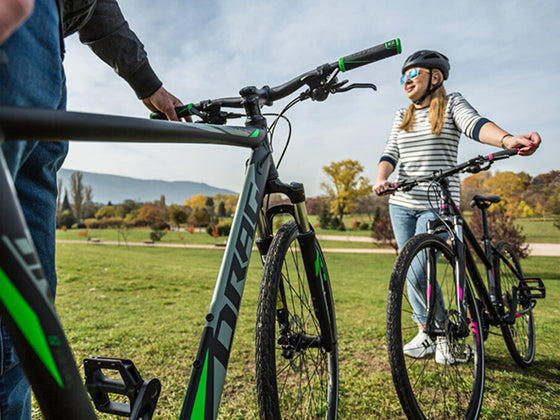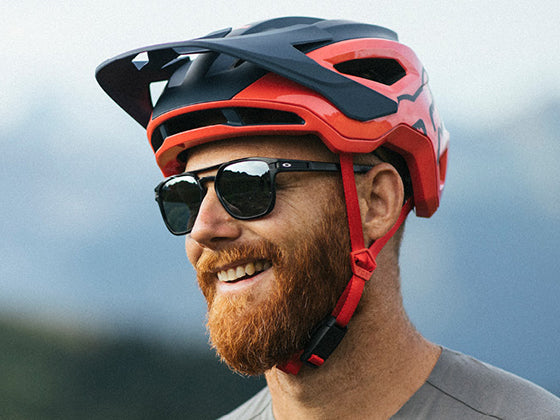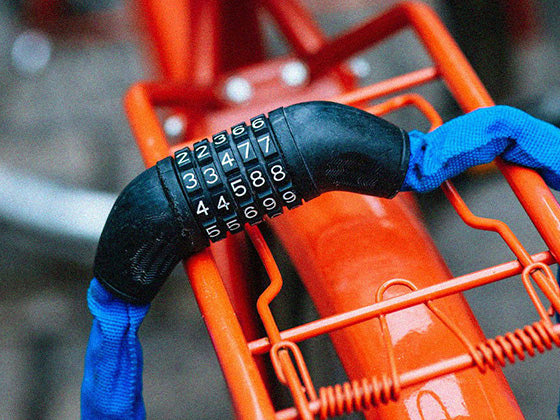Care & maintenance
A bicycle is a consumer item that should be checked regularly for signs of wear. You can easily maintain and care for your bike yourself. Maintenance and care differ significantly from an inspection by a specialist workshop, where the safety and technology of the bike are checked by experts.
To be happy with your bike for a long time, you should look after it regularly and check the components that are subject to heavy wear and tear, such as the chain and gears. We will show you exactly how to do this and what you need to pay attention to on this page.
With our tips, bike care will be child's play for you. With just a few simple steps, you can ensure that your bike stays well-maintained and passes every test.
tires and tubes
The air pressure should be checked at least once a month. The narrower the tire, the higher the optimal air pressure is as a rule. For bicycles that are used on the road, the air pressure should be as high as possible to improve rolling resistance, wear and tear and puncture resistance. A high-quality floor pump (from around €30) makes pumping up much easier.
The following applies: the greater the total load, the higher the air pressure must be. The minimum and maximum air pressure is indicated on the sidewall of each tire.
Further information can be found here: https://www.schwalbe.com/de/luftdruck.html
chain and drive maintenance
How long does a bicycle chain actually last? Unfortunately, there is no simple answer to this question. A chain can last between 1500 and 5000 kilometers, depending on the load and care. But one thing is certain: the more regularly the chain is cared for, the longer it will last. In most cases, thin bicycle chain oil and a rag are sufficient for chain care. Apply the oil to the inside of the chain and, if you have a derailleur, shift through the gears to distribute the oil. You can then use the rag to gently remove the excess oil. Ideally, the chain should always be clean and lightly lubricated to minimize wear.
If the teeth are very dirty, you can use an old toothbrush or special cleaning products.
NOTE: If your bike has disc brakes, make sure that the oil does not come into contact with the brake discs. If you use spray oil, point the can towards the crank.
Further information can be found here: http://www.kmcchain.de/WARTUNG_PFLEGE
The rear derailleur of a derailleur has what are known as pulley wheels. Dirt and grime that the chain has previously picked up often collects there. You can also easily clean these with oil and a cloth.
For the best possible shifting performance, the joints on the rear derailleur and front derailleur and the shift cables should also be lubricated with thin oil.
derailleur
What should I do if the derailleur is not working properly?
1. Check the derailleur hanger: Depending on the gear, the derailleur extends beyond the frame. Impacts can cause the derailleur hanger (a kind of predetermined breaking point between the frame and the derailleur) to bend. You can check the alignment by looking from behind over the chain to the front. The derailleur should be pointing vertically downwards. If this is NOT the case (as shown in the picture), you should have the derailleur hanger adjusted or replaced in a workshop.
2. Check for wear: Wear also has a significant impact on the gear shifting behavior. A worn chain should be replaced early to protect the pinions (rear) and chainrings (front). A chain gauge is necessary to check whether the chain is still in good condition.After a few thousand kilometers, the shift cables that connect the shift lever and the rear derailleur can also wear out. This usually manifests itself in the shift lever becoming stiff.
3. Check the adjustment: If your derailleur is neither bent nor worn, you can adjust it yourself using our video.
hub gears
Most bikes with hub gears are fitted with Shimano or SRAM gears. The hub gears are adjusted solely using the cable tension, which is regulated on the twist grip or shift lever.
NOTE: Hub gears require significantly less maintenance than derailleur gears because the gearshift is protected from environmental influences. However, most manufacturers recommend regular maintenance for the best possible function and durability.
Example: Shimano recommends an overhaul for 7- and 8-speed hub gears every 5,000 kilometers or every two years. The gear is placed in an oil bath, the bearing
wheels
If your bike has quick releases or thru axles, you should check them regularly to make sure they are firmly in place. The quick releases should only be able to be released using full hand strength. When closed, they should be as close to the fork or frame as possible to prevent accidental opening.
The spokes of the wheels can come loose, particularly in the first few days after purchase. This means that the spoke tension decreases and the rim becomes more susceptible to lateral or vertical runout. Colloquially, this is referred to as a "figure eight". During the necessary initial inspection in one of our workshops, the spokes are tightened and the rim centered.
brakes
One of the most important parts of a bicycle are the brakes. There are currently two main systems used: rim brakes and disc brakes. Since the brakes ensure your safety on the bicycle, they should also be serviced regularly. We will show you what you need to pay attention to in the following section.
disc brakes
Hydraulic disc brakes require less maintenance and are more durable than traditional rim brakes. However, these also need to be serviced regularly. If the braking effect of a hydraulic disc brake decreases, the brake usually needs to be bled or the brake pads replaced. To check the wear of the brake pads, take a look at the brake callipers of your disc brake. The actual brake pads are located on a slightly larger carrier plate, which is held in place by a metal clamp on most brakes. If the brake disc comes into contact with the metal clamp or the carrier plate, the brake pads should be replaced immediately.
If the brakes squeak when dry, the surface of the brake pads is often "glazed" by prolonged braking or contaminated with oil. The former can usually be removed by sanding the brake pads with fine sandpaper. Brake pads contaminated with oil or grease should be replaced for safety reasons. Brake discs can be cleaned of oil and grease using hot water and detergent.
If your brake is dragging, you can first check the adjustment yourself.
NOTE: For disc brakes that use DOT brake fluid, such as those from Avid or SRAM, the brake fluid should be replaced every one to two years.
rim brake
Logically, dirt and grime particles will accumulate on the rim of a bicycle that is used regularly. These particles contribute to the brake pads wearing out more quickly.By cleaning the rim side with lighter fluid or brake cleaner, this wear can be significantly reduced. Advanced wear is usually noticeable by a longer lever travel. However, the free travel of the brake lever can be adjusted up to a certain point using the screw on the brake lever.
cleaning
NOTE: Under no circumstances should you clean with a hard water jet or even a high-pressure cleaner. The high pressure will cause water and dirt to penetrate moving parts such as the bottom bracket and cause rust, which will lead to damage.
If the bike is very dirty, we recommend that you first remove the coarse dirt with a brush. Then you can remove the remaining dirt with a cloth, a water hose or a bucket of warm water. You can also use special bicycle cleaners.
NOTE: Even if, for example, Bosch e-bike batteries are splash-proof according to IP44, you must remove the battery and cover all controls before cleaning.
Further information on the care of Bosch e-bikes can be found here: https://www.bosch-ebike.com/de/news/pflege-von-ebikes/
spring elements
Suspension forks and shock absorbers require special attention when cleaning. Dirt often collects on the seals. If not cared for properly, this penetrates the fork or shock absorber and damages the sensitive coating on the sliding tubes. This has a negative impact on function and durability. Ideally, you should carefully clean the dust wipers after every ride with a clean (lint-free) cloth.
NOTE: Never spray oil directly onto the fork seals. This will displace the water and dirt repellent grease in the seals.
NOTE: For higher quality spring elements, specific maintenance and service intervals are also specified!











